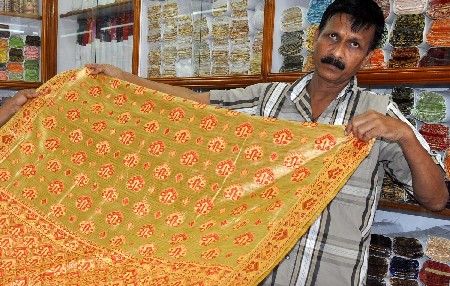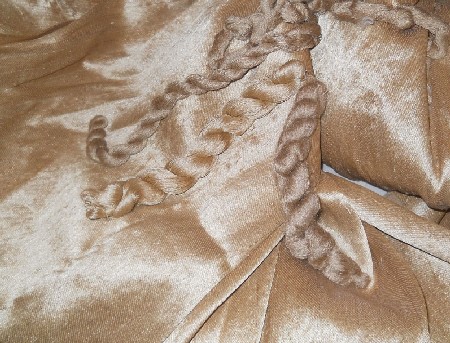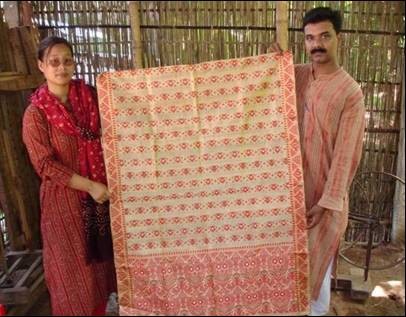
Guwahati: A dazzling traditional dress (mekhela chadar) woven with 'Muga' silk is indigenous to Brahmaputra Valley in Assam. In fact, it is one of most expensive gifts an Assamese young man can pick to win the heart of his woman. Why, not? This silk is simply magnificent, and almost as worthy as gold!
Muga silk (Muga Paat) or the golden silk is not only a nature's gift to Assam, but also a symbol of rich Assamese culture. It represents the brilliance of traditional attire of the region. The most significant characteristic of 'Muga silk' is its golden bright hue.
Its name is derived from Assamese word 'Muga', which means yellow. The fabric is superior in every respect in comparison to the normal white silk that available all over the world. It is also much more durable.

With time it only becomes more beautiful. Muga silk's brightness improves with every wash. It's no wonder that Muga silk is one of the costliest silks available in the world. Today, the cost of Muga silk is so high that for a middle-class woman in Assam it has become a prized possession, just as her gold ornaments.
Assam received the Geographical Indication (GI) tag for Muga silk in 2007. It was estimated that over 27,878 people were involved in the entire process of production of Muga silk and dress materials at that time.
The GI tag is registered in the name of Patent Information Centre, Assam Science Technology and Environment Council (ASTEC). It is valid for 10 years.

There are two kinds of registration under the GI Act - registered proprietor and registered users. While the registered GI is the ASTEC, there are hardly any registered 'users', even though there are plenty of traditional Muga silk worm farmers, fabric manufacturers and weavers in the state.
"There has to be about 27,000 registered users at the time of renewal of the GI Tag for Muga silk, otherwise the tag will be taken away from Assam," said an official of the ASTEC.
He said 'users' primarily mean families involved in cultivation of cocoons, weaving and post production work. The user has to apply in a prescribed form along with prescribed fee to the GI registry in Chennai.

"The lack of registered users is basically due to lack of awareness among people who are traditionally involved in production, manufacturing of Muga silk. We are taking steps to reach out to these people and enlighten them about the need for registration as users so that GI tag for Muga protected," the official said.
Muga is produced from cocoons of 'Antheraea Assamensis' which is available only in Assam. Muga worm ('Muga Polu' in Assamese language) also has the same lifecycle as that of a silkworm.
Traditionally Muga silk is used to make mekhela - chadar for women/girls and kurtas for boys and dresses made of Muga silk is considered most sophisticated and are expensive in Assam.

Antheraea Assamensis moth's eggs are laid out on the Som tree leaves to hatch out into caterpillars of about 2mm long. They grow rapidly, eat voraciously and grow as along as 30 mm in length after four to five weeks.
During this time, they change their skin four times. After the final skin change straw frames are provided, the silkworms make its cocoon in it.
The making of cocoon then takes eight more days. The worker interferes this life cycle at the cocoon stage to obtain the dream golden silk thread, which is used by the artisans to weave the enchanting Muga fabric.

"The demand of Muga silk is rising every year. As of date average quality Muga silk mekhela chadar or saree costs minimum Rs 10,000 in Assam. The price only rises when it is sold outside the state," said Hasna Shyam, an expert tribal weaver who has been in the business for years.
According to Shyam, the cost has shot up as the production of Muga silk has declined in comparison to its rising demand.
"The key reason for decline in production is because of the hazards posed to rearing of Muga polu in Som plantation under individual holding, due to rampant use of pesticides in mushrooming small tea gardens in the state," Shyam said.







0 comments:
Post a Comment